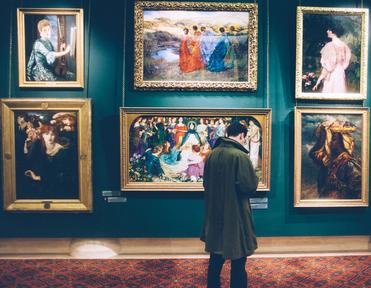Quiz Answer Key and Fun Facts
1. The first ship pictured is HMS Cavalier, a destroyer that saw service during the Battle of the Atlantic. During which conflict did this battle occur?
2. HMS Gannet was a sloop built for the Royal Navy in the 19th century, part of a revolution in naval shipbuilding combining both sails with steam-powered propulsion. During which era of British history did this revolution in shipbuilding occur?
3. The last Royal Navy vessel on display at Chatham Historic Dockyard is HMS Ocelot, an Oberon class submarine. Was HMS Ocelot the last Oberon Class submarine built for the Royal Navy at Chatham Dockyards?
4. On display in one of the covered slipways in Chatham dockyard is a collection of lifeboats. Which organization runs the lifeboat service that rescues people from the sea around the coast of the UK?
5. Displayed in another section of covered slipways at Chatham dockyard there is a midget submarine, built for the Royal Navy during World War II. Which famous German battleship did midget submarines from the Royal Navy attack whilst it was anchored in a Norwegian fjord?
6. Along with the ships on display at Chatham dockyard, there are a number of other exhibitions open to the public, including the Ropery. Here rope was made for the Royal Navy for rigging, along with anchor ropes. What type of material was NOT used for rope making at the dockyard?
7. In this picture is an old police phone box on display in the dockyard at Chatham - an object that may be familiar to fans of the BBC TV show "Doctor Who". However, what is the actual name for this spacecraft in which the Doctor travels?
8. Chatham dockyard also has its own railway system. For what reason did the dockyard need its own railway?
9. Displayed in one of the various exhibitions around the dockyard is a model of HMS Victory, what is HMS Victory's connection with Chatham dockyard?
10. At Chatham Historic Dockyard are a number of other attractions to see. What though may you NOT find when visiting the dockyard?
Source: Author
mcsurfie
This quiz was reviewed by FunTrivia editor
stedman before going online.
Any errors found in FunTrivia content are routinely corrected through our feedback system.

